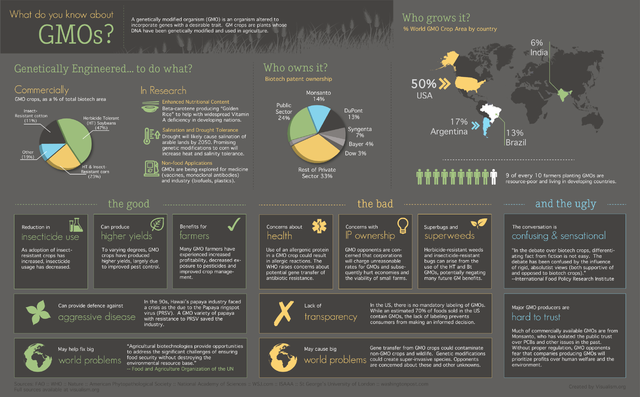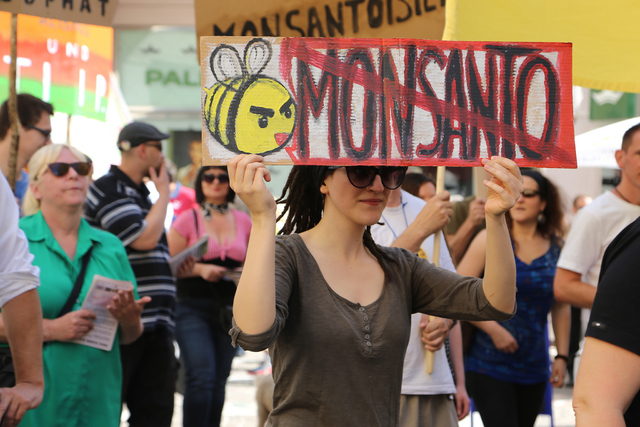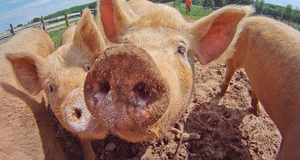Regulating GMOs in the United States and Europe: The Political and Economic Drivers Behind Monsanto's Agricultural Biotechnology Business
By
2014, Vol. 6 No. 08 | pg. 1/2 | »
IN THIS ARTICLE
While the regulation of bioengineered agriculture began at the same time in both the United States (U.S.) and the European Union (EU), the political and economic landscapes surrounding this industry on each side of the Atlantic diverged significantly over time. This divergence is exemplified by the varying success of industry leader Monsanto on either side of the Atlantic. In the U.S., modern bioengineering interests successfully pioneered a regulatory approach of 'forced invisibility,' whereas in the EU both policymakers and the public continue to demand strict transparency. Scholars, the media, and activist groups often attribute the difference in regulatory approaches to cultural "soft" factors, characterized by a precautionary approach and cultural aversion to genetically modified (GM) agriculture in the EU, and general ignorance of agricultural bioengineering in America. While relevant, these cultural factors focus more on the impact, rather than the cause, of Monsanto's dichotomized fiscal success on opposite sides of the Atlantic. They also discredit a U.S. history replete with both strong public interest advocacy and risk-averse health legislation that has, more often than not, prioritized consumer well-being and safety over scientific uncertainty. This paper argues that economic and political drivers—including agency capture, corporate lobbying, and intellectual property rights—rather than cultural factors, distinguish the viability of Monsanto’s business model for bioengineered soy in the U.S. from the EU.
Agricultural Regulation in the United Stated and the European UnionWhereas EU policymakers primarily focus on regulating the process of bioengineering agriculture, or the methods utilized in creating genetically modified (GM) seeds, U.S. regulators focus predominantly on the end product. This dissimilar regulatory approach to biotechnology allows greater leeway in the U.S. based on the principle that biotechnology is a fusion of both traditional and newly applied methods, rather than a whole new form of agriculture itself. Because Monsanto's Roundup Ready (RR) soybeans look similar, taste similar, and are grown in such a similar fashion to non-GM soybeans, it is thus unsurprising that until 1999 less than 3% of the U.S. public were aware that the majority of domestically consumed soybeans were bioengineered (Vogel, 2001). Whereas modern scholarly discourse focuses on the past 10 to 20 years of regulation, a long-term analysis that gives due consideration to public interest, agricultural, health and environmental legislation as far back as the 1960s illustrates that the U.S. has accomplished the opposite, often embracing the precautionary principle to a greater extent than its EU counterpart. Recent, isolated and highly publicized legislation regarding Monsanto has contributed to the confusion that a precautionary principle in bioengineering regulation is exclusive to Europe. The results of these legislative measures cause an inseparable association between the U.S. and Monsanto that disparages the American regulatory process. Conventional wisdom of this sort is not limited to the media and/or general public. EU officials, for example, have defended the precautionary principle as a "metaphor for protecting the European 'way of life' against the 'Americanization' of European commercial and agricultural practices.1” Even proponents such as European environmental NGOs argue that a regulatory mindset of this sort is inherently manifest in European doctrine and lacking in that of the U.S. A review of pertinent U.S. legislation during the 1960s to 1980s, however, suggests the exact opposite. The 1989 preemptive U.S. ban on Alar, a toxic chemical compound used to facilitate growth in apples, is significant because it demonstrates not only U.S. regulators' prioritization of agricultural safety over commercial interest, but also the representative power of U.S. NGO's. Alar's demise was spearheaded not by the government-sponsored Environmental Protection Agency (EPA), but rather the National Resources Defense Council, an environmental NGO which possessed little to no conclusive scientific evidence of Alar's actual health hazards. Still, the EPA ruled in defense of consumer safety, banning Alar on precautionary grounds rather than substantive evidence. Anti-Monsanto Poster - Photo: Flickr/Die Grünen Kärnten CC-2 Precautionary legislation of this sort has historically prevailed in the U.S. While the 1958 Delaney Clause to the Food, Drug and Cosmetic Act established a crucial precedent for consumer safety by banning cancer-causing chemical additives to food, its particular significance to this paper lies in the U.S. Court’s upholding of the Delaney Clause against powerful corporate lobbying. In 1988, 30 years after the inception of the Delaney Clause, the pesticide lobby won the favor of the EPA. Policymakers began granting exceptions to pesticide technologies based on a newly introduced concept of negligible risk. Unsurprisingly, agro-chemical multinationals then marketed a flurry of pesticide products on scientific grounds that only “one case of cancer in 70 years” was caused “for every 1 million people (Carr 2000).” If the pesticide lobby's success were to have been upheld, then surely an argument could be made that the disintegration of the U.S. precautionary principle began during this era. However, in 1994 the Environmental Natural Resources Defense Council, an NGO, again fought the EPA in court and won. By upholding the Delaney Clause, a U.S. Court ruled in favor of precautionary standards on grounds that pesticides could not be used without further scientific evidence, suggesting their conclusive, rather than probable, safety. The Delaney Clause is thus of paramount significance to the U.S. regulatory landscape for two reasons. First, it demonstrated skepticism of scientific claims of lack of harm, an approach most scholars attribute exclusively to the EU. Second, it sheds light upon one of many U.S. judicial rulings that have sided with public interest and NGO's rather than corporations, thus disproving that the precautionary principle is a phenomenon unique to the EU. In more recent legislation that specifically addresses the precautionary principle in the regulatory process, the U.S. and EU have in many ways adopted almost identical stances. The 1976 Court of Appeals decision that upheld the EPA's air standard for lead presence stated, "[a] statute allowing for regulation in the face of danger is, necessarily a precautionary statute. Regulatory action may be taken before threatened harm occurs..." Similarly, the 1997 U.S. Clean Air Act Amendments, which instructed regulators to "assess risk rather than wait for proof of actual harm," echoes that of the EU ruling in the Treaty on the European Union (1993): "Community policy shall aim at a high level of protection...It shall be based on the precautionary principle and on the principles that preventive action should be taken...(Vogel 2001)." If the U.S., like the EU, has adopted a precautionary principle, why does Monsanto's bioengineered soy experience such contrasted success on different sides of the Atlantic? The answer to this question is best understood through the utilization of a stakeholder analysis.Continued on Next Page » Suggested Reading from Inquiries Journal
Inquiries Journal provides undergraduate and graduate students around the world a platform for the wide dissemination of academic work over a range of core disciplines. Representing the work of students from hundreds of institutions around the globe, Inquiries Journal's large database of academic articles is completely free. Learn more | Blog | Submit Latest in Political Science |




















